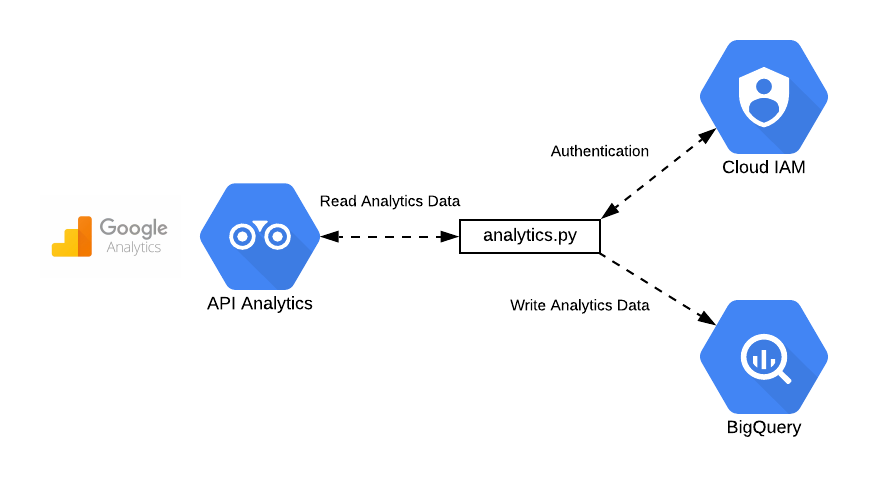
Artificial Intelligence (AI) and Machine Learning (ML) are the future of tomorrow’s data-driven business world. These new-age technologies run heavily on large datasets for training models. However, these datasets often contain sensitive information and user data, making security a critical concern. Various synthetic data transformation techniques have evolved over the past few years. However, cyber criminals have prying eyes on sensitive datasets that enterprises use for training AI models. The effectiveness of modern AI applications and projects depends not only on the quality, quantity, and integrity of datasets used in training and inference, but also on the data security aspect.
Enterprises that extract feature data for precise AI modeling rely more on sensitive datasets, ranging from financial records to medical histories and personal user data. Thus, the need to secure these datasets becomes paramount. That is where cryptographic algorithms and data obfuscation techniques are emerging as a cornerstone of data protection. This article is a complete walkthrough of different cryptographic techniques used in securing AI datasets.
Understanding Cryptography
Cryptography is the practice of securing data at rest or in transit by converting it into an unreadable format (usually known as ciphertext) & then converting it back into a readable format (known as plaintext) with the help of a key. This data security technique ensures that only authorized individuals with the correct key can access the original information, protecting it from unauthorized access and ensuring confidentiality, integrity, and authentication. We all have heard about the concept of encryption and decryption. The process of converting plain text to ciphertext is called encryption, whereas the process of converting ciphertext back to plain text is called decryption.
Need for Cryptographic Protection for AI Datasets
As we have gathered insights, it is evident that AI datasets used for training AI models often contain sensitive or proprietary information. Thus, enterprises need to implement cryptographic algorithms to prevent unauthorized reading, tampering, or leaking of data. Datasets of banking AI and healthcare systems include personal data (e.g., medical records, financial details) or proprietary business insights that, if exposed, could lead to privacy violations, regulatory penalties, or competitive harm.
Various other factors contribute to why enterprises need cryptographic encryption techniques to protect data used for empowering AI models.
1. Trust and AI model security
Many enterprises take user consent to leverage their data in training AI models. If attackers compromise the data used in the training model, they can easily steal it and sell it over the dark web. Unverified or compromised data can also lead to biased, incorrect, or even malicious behaviors on AI systems, such as data poisoning attacks. Such sensitive data leakage could lead to trust issues. Again, if cybercriminals could see and read the data, it would become easy for them to inject a malicious dataset to create biases. Therefore, cryptographic algorithms are essential for enterprises to encrypt such data.
2. Collaboration and teamwork
Since data remains secure at rest and in transit because of cryptographic algorithms, enterprises can enable data provenance, traceability, and authority in collaborative and federated learning environments. Various enterprises across the globe can work on such AI projects where data security is the top priority. Techniques such as secure multi-party computation (SMPC), homomorphic encryption, and federated learning enable participants to contribute data insights, train AI models, and validate results while maintaining the confidentiality of the underlying data.
3. Privacy Regulations
Cyberlaws have become stricter than ever before because of the misutilization of personal data. Laws such as GDPR, HIPAA, CCPA, GPDP, and DPDP Act require organizations to ensure data privacy and provide instruments for consent, data leak minimization, and secure processing. Cryptographic approaches can offer a legal and technical shield for AI datasets to comply with such regulations. It can also help AI-developing enterprises protect themselves from lawsuits.
4. Training data sensitivity
AI models are data hungry. They feed on volumetric labeled datasets. These datasets may include personal identifiable information (PII), healthcare records, biometric data, or proprietary business information. Without adequate protection, such data can be leaked, tampered with, or misused. These cryptographic techniques provide robust methods for securing AI data during storage, transfer, and computation, ensuring confidentiality, integrity, and privacy.
Popular Encryption Techniques for Confidentiality in AI Datasets
Enterprises use myriad encryption techniques to protect the confidentiality of AI datasets. These include symmetric and asymmetric encryption, which are fundamental methods of cryptography. Other advanced techniques, such as homomorphic encryption and federated learning, are also prominent.
Additionally, we can leverage techniques such as data masking, differential privacy, and secure multi-party computation to help the enterprise AI data factory secure and privacy-proof. In this section, we will dive into the different encryption techniques used for protecting volumetric data used for training AI models.
1. Symmetric Encryption Technique
Symmetric encryption is also known as secret key encryption. In this cryptographic technique, the same key is used for encrypting and decrypting the target data used for AI training. It means both the sender and receiver must possess and keep the key secret to ensure secure communication. Algorithms like AES (Advanced Encryption Standard) are popular symmetric encryption techniques to protect stored datasets and volumetric data flow.
Enterprises can use symmetric cryptography to encrypt datasets before storing them in cloud storage. They are fast and suitable for encrypting large datasets.
2. Asymmetric Encryption Technique
Asymmetric encryption, also known as public-key cryptography, uses a pair of keys – a public key and a private key – for encryption and decryption. One can share the public key with anyone, while the private key must be kept secret by the one creating the cipher version of the data. One can decrypt the data encrypted with the public key using its corresponding private key. This method enables us to communicate securely and secure data flow without sharing a secret key beforehand. RSA and ECC (Elliptic Curve Cryptography) are common examples.
Asymmetric cryptographic algorithms are perfect for securely sharing encrypted datasets between collaborators and teams residing at remote corners of the world. It helps protect user inputs during encrypted AI inference. This algorithm allows key exchange securely. Asymmetric encryption algorithms are slower but stronger because of their larger encryption and decryption key sizes.
3. Homomorphic Encryption (HE) Technique
Homomorphic encryption (HE) is a cryptographic technique that allows AI engineers to perform computation directly on encrypted data (ciphertexts) without requiring decryption. It means that third-party service providers can process data without ever accessing the original, unencrypted data. t helps preserve the privacy and confidentiality of data used in AI modeling. There are two types of homomorphic encryptions – Partial and Full.
It can secure AI inference on encrypted user data. Training AI systems for healthcare or finance needs this type of encryption for privacy-preserving analytics. It guarantees strong confidentiality and is ideal for AI systems that demand zero-trust security policies.
4. Secure Multi-Party Computation (SMPC) Technique
Secure Multi-Party Computation (SMPC) is a cryptographic technique that enables multiple users or parties to jointly compute a function on their private inputs or dataset without revealing those inputs or data to one another. Essentially, we can secure collaboration on data analysis, data used for training AI models, and computations that use large databases, even when parties don’t trust each other. It ensures data privacy and security.
Since multiple parties can jointly compute an AI algorithm over their given inputs while keeping data private, enterprises can use this cryptographic technique in collaborative AI projects. It enables federated learning across institutions without disclosing raw data. With this data security technique, input data fed to the AI remains local and confidential.
5. Differential Privacy (DP) Technique
It is a data privacy framework that enables the analysis and sharing of sensitive datasets while protecting the privacy of PIIs within those datasets. In essence, DP guarantees that the presence or absence of any single individual’s data in the dataset will not significantly alter the outcome of any analysis or query. Enterprises use it to prevent datasets used in AI modeling by adding random noise to the dataset or query results.
It helps AI engineers design a system that can avoid the identification of individual data points, even by attackers with auxiliary knowledge. Various AI libraries and APIs, such as TensorFlow Privacy and PyTorch Opacus, implement DP for deep learning models’ data privacy.
Industry Adoption & Use Cases of Cryptographic Techniques for AI Datasets
Industry adoption of cryptographic algorithms for AI datasets is increasing due to the growing need for secure and private AI development. If we do not pay attention to the data used for AI models, chances are our companies might fall under compliance violations or massive data leakage. Therefore, to enhance data security, enterprises are leveraging cryptographic techniques and methods used for AI data and data-driven pipelines.
Let us explore some well-known use cases and companies that use modern cryptographic algorithms to secure their datasets used for AI/ML training.
- Search engine giant Google uses DP in data collection from billions of users.
- Top-notch phone-maker Apple employs encrypted AI inference for voice and image processing.
- Microsoft Azure’s Confidential Computing (CC) leverages Trusted Execution Environments (TEEs) for secure AI model deployment. Other AI services of Microsoft utilize HE and DP in its AI ecosystem.
- Numerous genomics and healthcare firms are leveraging cryptographic methods for collaborative genomic analysis, training ML models to predict diseases across hospitals while preserving patient confidentiality.
Conclusion
We hope this article provided a clear understanding of the various cryptographic techniques used to secure AI datasets. Securing AI datasets in the era of concerned data privacy is not an option, but a necessity in today’s privacy-aware and regulation-heavy world. Cryptographic techniques serve as the backbone of this protection, enabling secure computation, privacy-preserving learning, and trusted AI ecosystems. The new era of AI, where accurate data has become the cornerstone of advanced machine intelligence, is securely managed by encryption systems like homomorphic encryption, secure multi-party computation, and differential privacy.
As AI systems become more pervasive and data continues to grow in volume and sensitivity, enterprises should let cryptography and AI marry to build future-ready, trustworthy AI infrastructures. Enterprises that invest in these techniques today will not only secure their data assets but also acquire a competitive edge with ethical advantages in tomorrow’s AI-driven world. To know more, explore our innovative digital solutions or contact us directly.









